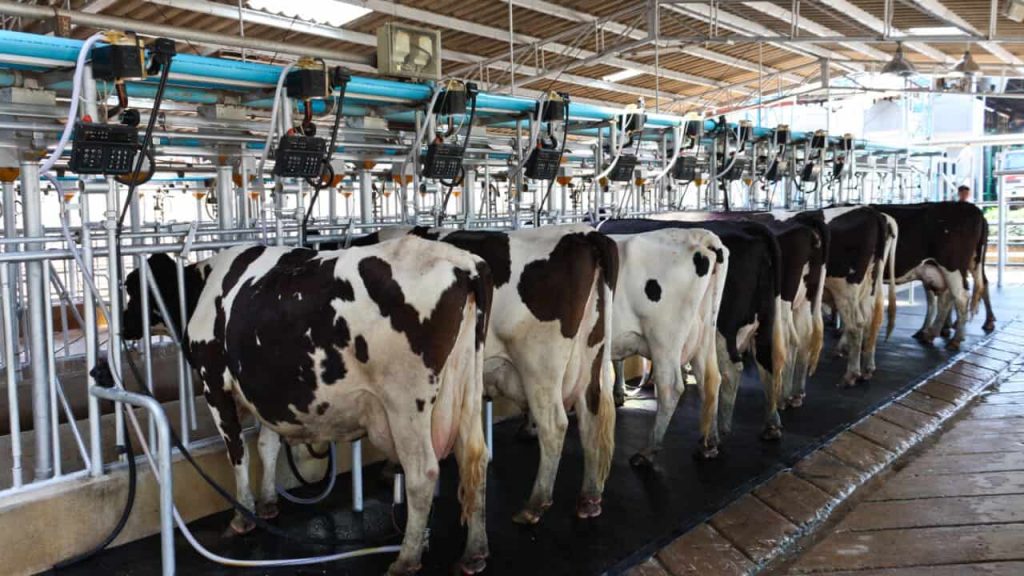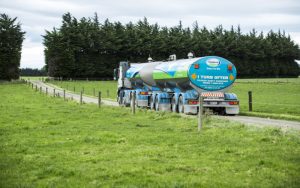
Limited milk supply growth and lacklustre demand led to soft dairy commodity pricing in 2023, however, the global dairy market appears to be transitioning to the next phase in its cycle, with prices expected to move higher through 2024, according to Rabobank’s latest Global Dairy Quarterly report.
While the market remains finely balanced, and uncertainty surrounds underlying demand for 2024, Rabobank says it anticipates some upside for New Zealand milk prices over the remainder of the season and has now lifted its farmgate milk price forecast for 2023/24 to $7.75/kg/MS.
In the report: Shifting to the next phase of the cycle, Rabobank says the global dairy market continues to walk a tightrope of limited “new” milk and sluggish demand.
“The year saw soft global dairy commodity pricing due to weaker underlying fundamentals. Global milk supply growth was underwhelming, with three consecutive quarters of growth (Q4 2022 – Q2 2023) halted by lower milk prices, elevated costs, and weather disruption in the second half of the year,” it says.
The report says Rabobank’s global milk supply outlook for 2024 has weakened, with sluggish growth expected across most export regions.
“The milk supply export engine never fully fired on all cylinders in 2023 and declined year-on-year in the third quarter by 0.2 per cent,” Rabobank senior dairy analyst Michael Harvey said.
“Year-over-year milk production from the Big 7 exporting regions – the US, Argentina, Uruguay, Brazil, the EU, Australia and New Zealand – is forecast to decrease through Q1 2024 before turning positive. Overall, milk supply is forecast to grow by a modest 0.3 per cent for the entire year.”
According to the report, farmgate milk prices across the export regions will close out 2023 anywhere between 20 per cent to 40 per cent lower versus the start of the year. However, with the 2024 feed cost outlook looking more favourable, some regional milk prices have recently increased, boosting farmgate margins.
“We expect a slow recovery in dairy commodity prices back to long-term averages,” Mr Harvey said.
“However, current fundamentals provide the perfect ingredients for price volatility and a possible market whiplash. Geopolitical instability risks, volatile energy markets, and weak macroeconomic conditions will be something to watch in 2024 for the global dairy markets.”
Demand uncertainty ahead
The report says demand will be a key factor to watch in 2024, with high dairy inflation, broader cost-of-living issues, and weak consumer confidence remaining on the horizon. Peak food and dairy inflation have passed, but market uncertainty remains, and rising unemployment will further impact purchasing power in 2024. Emerging markets and low-income households are under the most pressure.
In China, consumer prices are falling and foodservice recovery continues, but overall consumption growth is sluggish. China’s import appetite for dairy commodities is still expected to drive any Oceania commodity price rally in 2024.
“Rabobank expects China’s import volume to flatline in 2024, which would be a positive result, given the previous two years of withdrawal from the global markets,” Mr Harvey said.
“This is an opportunity for importers outside of China to build stocks in 2024.”
Other factors to watch in 2024 include a mildly softer grain and oilseed price outlook, El Niño and weather-related risks, mixed livestock markets in export regions, and the impact of the Israel-Hamas war on global markets.
New Zealand
While Fonterra’s forecast milk price has recently improved, Rabobank senior agriculture analyst Emma Higgins said margin pressure continues to linger for New Zealand dairy farmers.
“Fonterra suppliers have had cash flow buoyed by a helpful healthy dividend return to shareholder suppliers,” she said.
“But margins are expected to remain tight over coming months with cashflow impacts likely to be most acute over quarter two and quarter three next year, depending on the processor and business system.”
The report says the spring flush month of October was less disappointing than expected, given the challenging spring in the Waikato.
“Output was marginally lower than last season’s poor performance on a tonnage basis, but 0.9 per cent higher year-on-year on a milk solids basis, reflecting the continued trend of more milk from fewer cows,” it says.
Ms Higgins said El Niño conditions continue to intensify, with variable impacts so far.
“The broad trend over the next three months is for drier conditions in the east and north of New Zealand, with wetter conditions on the west coast of New Zealand,” she said.
“Autumn calving businesses could be impacted by the dry period, which could coincide with budget constraints and expensive feed. But there is still hope that tropical weather systems could provide rain relief in the shoulder season.”
The report says full-season production is estimated to decline by up to two per cent this season.
“This season will continue to be a story of two islands, with year-on-year milk production growth in the North Island likely to continue to trail behind the South Island over the coming months,” Ms Higgins said.
“Conservative budgets mean a cautious approach for farming through summer and into autumn which is likely to impact milk flows in the second half of the season. Animal health management is key for establishing a strong start to the 2024/25 season, but it will be at risk if farmers look to milk hard to make up for the lower forecast milk price.”
Rabobank New Zealand Rabobank New Zealand is a part of the global Rabobank Group, the world’s leading specialist in food and agribusiness banking. Rabobank has more than 120 years’ experience providing customized banking and finance solutions to businesses involved in all aspects of food and agribusiness. Rabobank is structured as a cooperative and operates in 38 countries, servicing the needs of about 8.6 million clients worldwide through a network of close to 1000 offices and branches. Rabobank New Zealand is one of the country’s leading agricultural lenders and a significant provider of business and corporate banking and financial services to the New Zealand food and agribusiness sector. The bank has 27 offices throughout New Zealand.
























